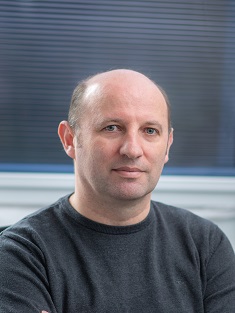MATS within NUSTAR at FAIR

The mass and its inherent connection with the nuclear binding energy constitute a fundamental property of a nuclide, a unique "fingerprint". Thus, precise mass values are important for a variety of applications, ranging from nuclear-structure studies like the investigation of shell closures and the onset of deformation, test of nuclear mass models and mass formulas, to tests of the weak interaction and of the Standard Model. The required relative accuracy ranges from 1E-5 to below 1E-8 for radionuclides, which most often have half-lives well below 1 s. Substantial progress in Penning trap mass spectrometry has made this method a prime choice for precision measurements on rare isotopes. The technique has the potential to provide high accuracy and sensitivity even for very short-lived nuclides. Furthermore, ion traps can be used and offer advantages for precision decay studies.
With MATS (Precision Measurements of very short-lived nuclei using an Advanced Trapping System for highly-charged ions) at FAIR we aim for applying both techniques to very short-lived radionuclides: high-precision mass measurements and in-trap conversion electron as well as alpha spectroscopy. The experimental setup of MATS is a unique combination of an electron beam ion trap for charge breeding, ion traps for beam preparation, and a high precision Penning trap system for mass measurements and decay studies.
For the mass measurements, MATS offers both a high accuracy potential and a high sensitivity. A relative mass uncertainty of 1E-9 can be reached by employing highly-charged ions and a non-destructive Fourier-Transform-Ion-Cyclotron-Resonance (FT-ICR) detection technique on single stored ions. This accuracy limit is important for fundamental interaction tests, but also allows to study the fine structure of the nuclear mass surface with unprecedented accuracy, whenever required. The use of the FT-ICR technique provides true single ion sensitivity. This is essential to access isotopes that are produced with minimum rates and that very often are the most interesting ones. Instead of pushing for highest accuracy, the high charge state of the ions can also be used to reduce the storage time of the ions, hence making measurements on even shorter-lived isotopes possible.
Decay studies in ion traps will become possible with MATS. Novel spectroscopic tools for in-trap high-resolution conversion-electron and charged-particle spectroscopy from carrier-free sources will be developed, aiming e.g. at the measurements of quadrupole moments and E0 strengths. With the possibility of both high precision mass measurements of shortest-lived isotopes and decay studies, its high sensitivity and accuracy potential MATS is ideally suited to for the study of very exotic nuclides that are only produced at the FAIR facility.
For further information, please visit the website of MATS

